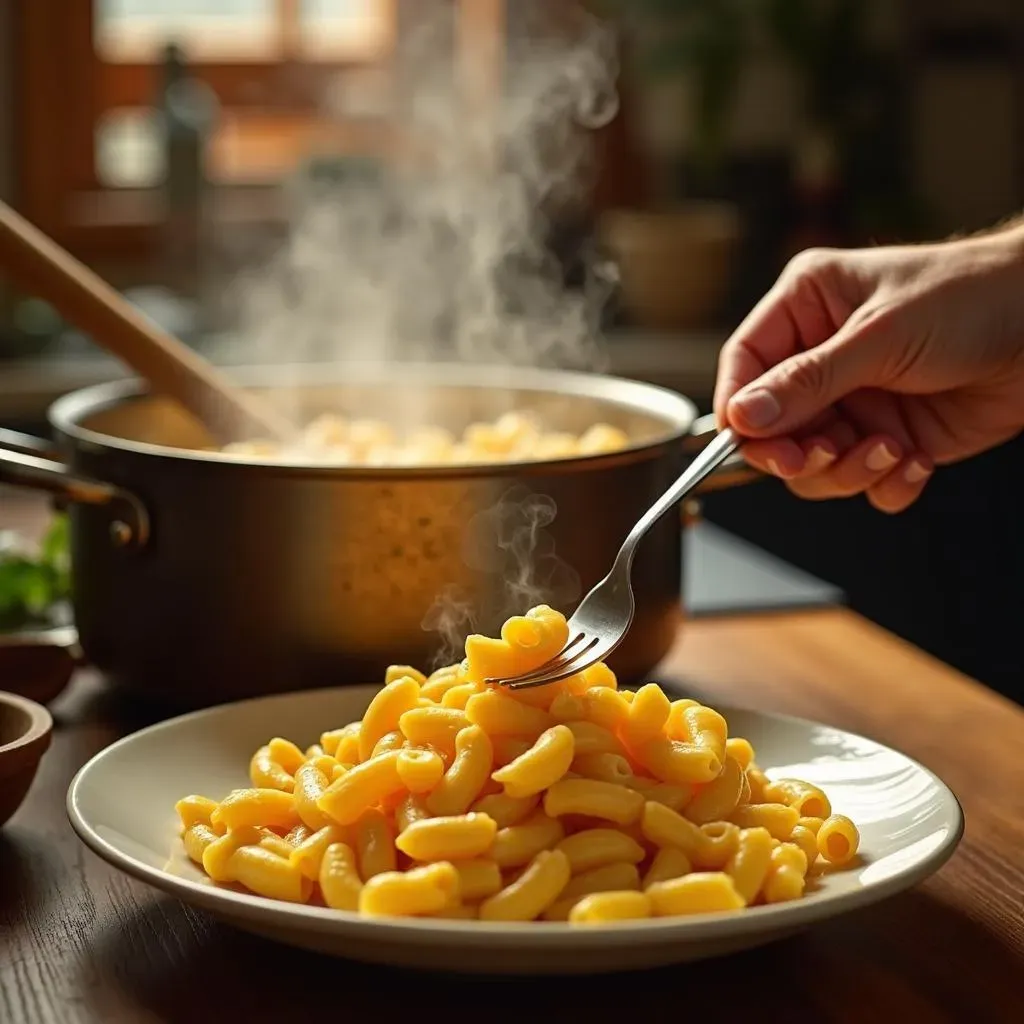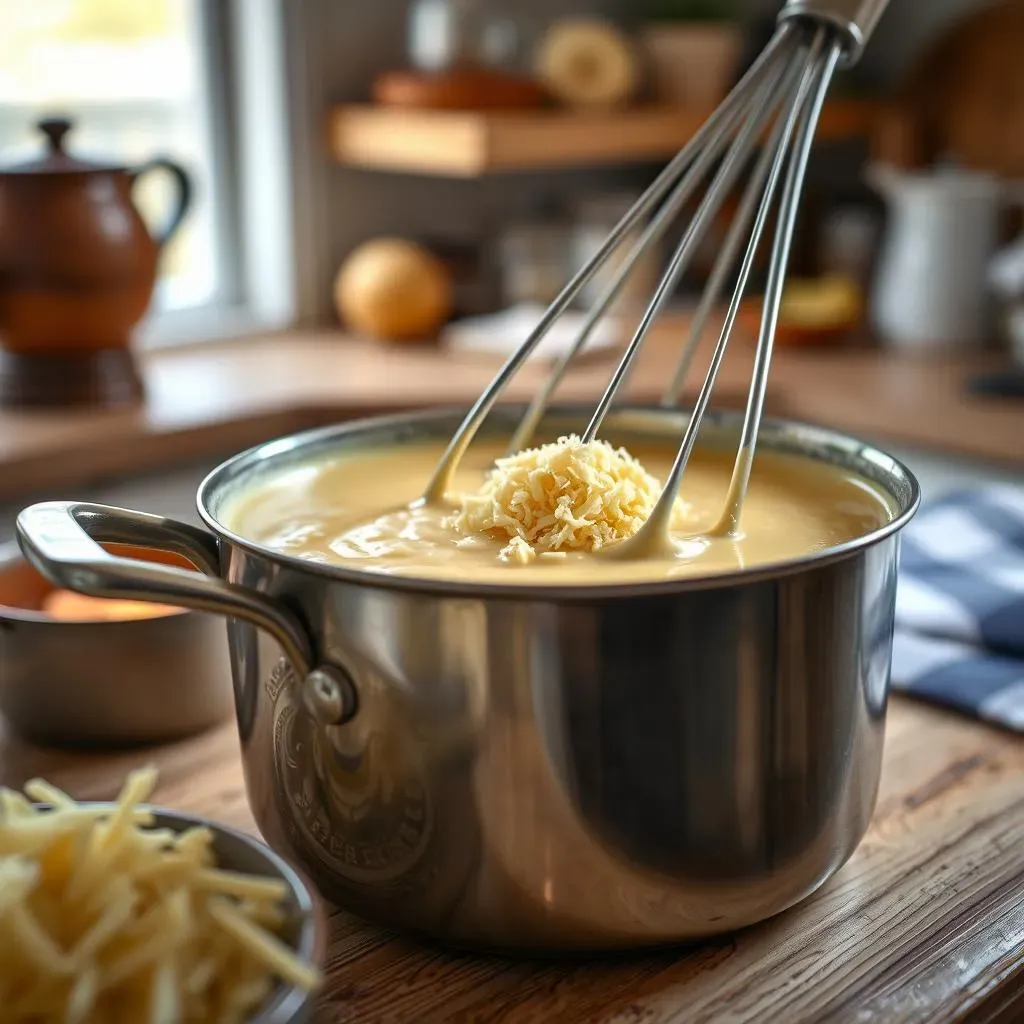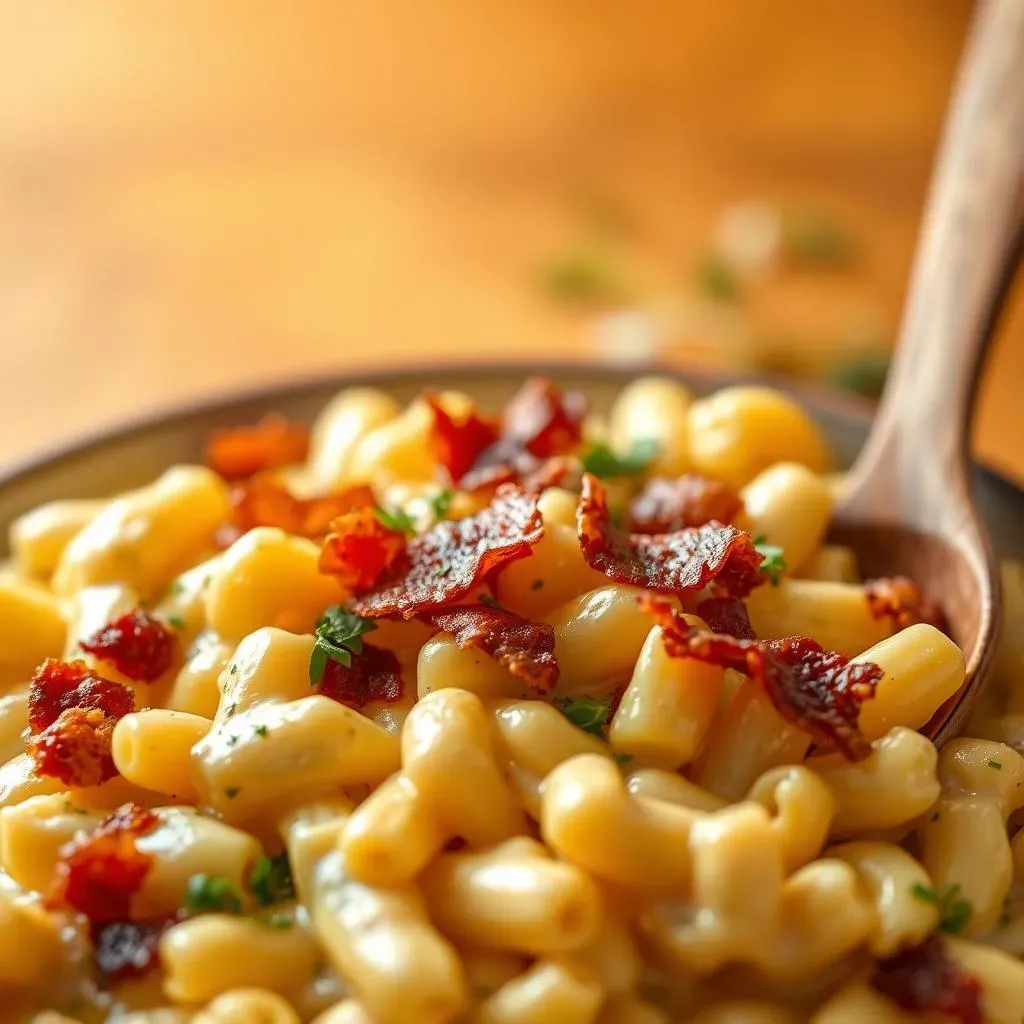Table of Contents
Let's be honest, there's nothing quite like a bowl of perfectly creamy, cheesy classic mac and cheese. But achieving that ideal texture and flavor isn't always easy! Getting the classic mac and cheese cooking time just right is crucial. This article is your ultimate guide to mastering the art of making this comforting dish. We'll break down the process step-by-step, starting with boiling the pasta to achieve that perfect "al dente" bite. Then, we'll dive into creating a luscious cheese sauce that's both rich and creamy. Next, we'll cover the baking process, ensuring your mac and cheese emerges from the oven with a perfectly golden brown crust and a bubbly, irresistible interior. Finally, we'll tackle common problems and offer delicious variations to customize your mac and cheese to your liking. Get ready to elevate your mac and cheese game with this comprehensive guide to classic mac and cheese cooking time—you'll be amazed at how easy it is to create restaurant-quality results in your own kitchen!
Boiling the Pasta: Achieving Al Dente Perfection

Boiling the Pasta: Achieving Al Dente Perfection
Okay, so you're making classic mac and cheese, right? The first step is getting that pasta perfectly cooked. We're aiming for "al dente," which is Italian for "to the tooth." It means the pasta should be firm to the bite, not mushy. Think of it like a perfectly cooked noodle – you should still feel a slight resistance when you chew it. Overcooked pasta will turn your creamy masterpiece into a gluey mess, and no one wants that! So, how do you nail that al dente texture? It's all about timing and technique. First, use a large pot with plenty of salted, boiling water. Salt is key—it seasons the pasta from the inside out, making it tastier. Add your pasta and stir gently to prevent sticking. Then, follow the package directions for cooking time, but start checking for doneness a minute or two earlier.
Remember, every stove and every type of pasta is slightly different. For a classic mac and cheese recipe, elbow macaroni is a popular choice. You can find a great recipe here: Classic Mac and Cheese Recipe. To check for doneness, fish out a piece of pasta and bite into it. If it’s still too firm, give it another minute or two. If it's perfectly al dente, drain it immediately. Don't rinse it; that washes away the starch that helps the cheese sauce cling to the pasta. A little starch is your secret weapon for extra creamy mac and cheese. Here's a handy tip: If you're unsure about cooking times, always err on the side of slightly undercooked. You can always finish cooking the pasta gently in the cheese sauce later, preventing overcooking.
Pasta Type | Approximate Cooking Time (minutes) | Al Dente Check Point (minutes) |
|---|---|---|
Elbow Macaroni | 7-9 | 6-7 |
Shells | 8-10 | 7-8 |
Cavatappi | 9-11 | 8-9 |
One more thing to keep in mind: Overcrowding the pot can lead to unevenly cooked pasta. So, make sure you have enough water to allow for free movement of the pasta. If you have a really large batch to make, consider doing it in two batches, to ensure that each batch cooks evenly. For beginners, this is a great guide: Classic Mac and Cheese for Beginners.
And there you have it! Mastering the art of boiling pasta is a cornerstone of making great mac and cheese. It's a simple step, but it makes all the difference in creating a truly delicious dish. Now let's move on to making that amazing cheese sauce!
- Use a large pot with plenty of water.
- Salt the water generously.
- Cook pasta until al dente, checking frequently.
- Drain immediately, do not rinse.
Making the Cheese Sauce: The Key to Creamy Texture

Making the Cheese Sauce: The Key to Creamy Texture
The Roux: Building the Base
The foundation of any great cheese sauce is the roux. A roux is simply a mixture of butter and flour cooked together. It thickens the sauce, creating that luscious, creamy texture we all crave. Don't be intimidated; it's easier than you think! Melt the butter in a saucepan over medium heat. Then, whisk in the flour gradually, making sure there are no lumps. Cook the mixture for a few minutes, stirring constantly, until it's smooth and lightly golden. This step is crucial; don't rush it! Undercooked flour will taste raw, and overcooked flour will make your sauce taste bitter. For more tips on making a perfect cheese sauce, check out this guide: How to Make Classic Mac and Cheese.
- Use a good quality butter.
- Whisk constantly to prevent lumps.
- Cook until lightly golden, not brown.
Adding the Milk: Achieving Creamy Perfection
Once you have your perfectly cooked roux, it's time to add the milk. This is where the magic happens! Gradually whisk in your warm milk (room temperature is best – it prevents the sauce from curdling), a little at a time. Continue whisking constantly to prevent lumps. As you add more milk, the sauce will start to thicken. Keep whisking until it's smooth and creamy. Don't rush this step either; slow and steady wins the race with cheese sauce! If you want a richer flavor, you can use a mixture of milk and cream. This is also a great time to add any seasonings you like, such as salt, pepper, garlic powder, or even a pinch of nutmeg. For a really special twist, try adding some smoked gouda! You can find a recipe here: Classic Mac and Cheese with Smoked Gouda.
Ingredient | Amount (Approximate) |
|---|---|
Butter | 1/4 cup |
Flour | 1/4 cup |
Milk | 2 cups |
Cream (optional) | 1/2 cup |
Stirring in the Cheese: The Grand Finale
Finally, it's time to add the cheese! This is the most exciting part. Use freshly grated cheese, not pre-shredded. Pre-shredded cheese often contains cellulose, which can prevent it from melting smoothly. Gradually add the cheese to the warm sauce, whisking constantly until it's completely melted and smooth. The best cheeses for classic mac and cheese are sharp cheddar and Gruyère, but feel free to experiment! A blend of cheeses often results in a more complex and delicious flavor. Once the cheese is melted, taste and adjust the seasoning as needed. If the sauce is too thick, add a little more milk or cream. If it's too thin, cook it for a minute or two longer, stirring constantly. And now for a little secret: a touch of Dijon mustard adds a surprising depth of flavor. Ready to make your own masterpiece? Check out our best recipe: Best Classic Mac and Cheese Recipe.
There you have it – a creamy, dreamy cheese sauce ready to be combined with your perfectly cooked pasta! Remember, practice makes perfect. Don't be discouraged if your first attempt isn't quite perfect; keep experimenting and you’ll soon be a mac and cheese master!
Baking Your Mac and Cheese: Timing for Golden Goodness

Baking Your Mac and Cheese: Timing for Golden Goodness
Getting Started: Prep and Pour
Alright, your cheesy masterpiece is ready for its oven debut! Transfer your creamy mac and cheese mixture into a greased baking dish. This is where you get to customize things a bit. A classic casserole dish works perfectly, but for a rustic touch, try a cast-iron skillet! Find more ideas here: Cast Iron Skillet Mac and Cheese. If you're feeling fancy, you can top your mac and cheese with breadcrumbs for extra crunch. Or maybe some bacon bits for a smoky, salty kick? The possibilities are endless!
- Use an oven-safe baking dish.
- Grease the dish to prevent sticking.
- Add toppings if desired (breadcrumbs, bacon, etc.).
Baking Time: The Sweet Spot
Now for the crucial part: baking time. This depends on your oven, the size of your baking dish, and how bubbly and browned you like your mac and cheese. A general guideline is to bake at 350°F (175°C) for 20-30 minutes, or until golden brown and bubbly. But keep a close eye on it! Every oven is different, so start checking for doneness around the 20-minute mark. If you want extra browning on top, you can broil it for the last few minutes, but watch carefully to prevent burning. For more baking tips, check out this helpful guide: Classic Mac and Cheese Baking Tips. Remember, it's better to slightly underbake than to overbake – you can always add a few more minutes if needed.
Oven Temperature | Baking Time (minutes) | Doneness Check |
|---|---|---|
350°F (175°C) | 20-30 | Check at 20 minutes |
375°F (190°C) | 15-25 | Check at 15 minutes |
Signs of Perfection: What to Look For
How do you know when your mac and cheese is perfectly baked? Look for a few key signs. The top should be golden brown and bubbly, and the cheese should be completely melted and creamy throughout. If you insert a knife into the center, it should come out clean. If it's still a little jiggly, give it a few more minutes. If the top is browning too quickly, you can loosely tent it with foil to prevent burning. Once it's perfectly baked, remove it from the oven and let it rest for a few minutes before serving. This allows the cheese to set slightly and makes it easier to serve. For variations, you might want to try some different cheeses! See this recipe: Classic Mac and Cheese with Cheddar.
And there you have it! Your perfectly baked mac and cheese, ready to be enjoyed! Remember, practice makes perfect, so don't be afraid to experiment with different baking times and temperatures to find what works best for your oven and your taste.
Troubleshooting and Variations: Tips for Mac and Cheese Success

Troubleshooting and Variations: Tips for Mac and Cheese Success
Troubleshooting: Fixing Common Mac and Cheese Problems
So, your mac and cheese isn't quite perfect? Don't worry, even experienced cooks face occasional setbacks. Let's tackle some common issues. A grainy sauce is often caused by using pre-shredded cheese, which contains cellulose that prevents smooth melting. Always use freshly grated cheese for the best results! If your sauce is too thick, simply whisk in a little more milk or cream until you reach the desired consistency. Too thin? A few more minutes of simmering, with constant stirring, will thicken it up. If your pasta is overcooked, well, that's a lesson learned for next time! Remember to check it frequently and aim for al dente. For a super-smooth sauce, make sure your milk and butter are warm before you start making the roux. A perfectly cooked roux is the key to a creamy sauce. Need more help? Check out our helpful guide: Mac and Cheese Without a Roux.
Another common problem is a burnt or dry mac and cheese. This is usually caused by baking at too high a temperature or for too long. Always keep a close eye on your mac and cheese while it's baking, and start checking for doneness a few minutes before the recommended time. If the top is browning too quickly, you can loosely cover it with foil. A little underbaking is better than overbaking; you can always add a few minutes if necessary. Remember, every oven is a little different, so don't be afraid to adjust the baking time based on your oven's quirks. For a more even bake, try using a smaller, shallower baking dish, which will allow for faster and more even heating.
- Use freshly grated cheese.
- Adjust milk for consistency.
- Monitor baking carefully.
- Use a smaller baking dish for even cooking.
Variations: Beyond the Classic
While classic mac and cheese is undeniably delicious, there's a whole world of variations waiting to be explored! Want to add some extra flavor and texture? Try adding cooked bacon, crispy breadcrumbs, sautéed mushrooms, or roasted vegetables. For a spicier kick, add a pinch of cayenne pepper or some chopped jalapeños to the cheese sauce. Feeling adventurous? Experiment with different types of cheese! A blend of sharp cheddar, Gruyère, and fontina is a fantastic combination. For a truly unique twist, try adding some truffle oil or roasted garlic. The possibilities are endless! Here's a great recipe to inspire you: Classic Mac and Cheese with Bacon. Don't be afraid to get creative and experiment with different flavors and textures to find your perfect mac and cheese recipe.
Consider different pasta shapes! While elbow macaroni is a classic, shells, cavatappi, or even rotini can add a fun twist. You can also experiment with different baking methods. For a crispier top, try broiling your mac and cheese for the last few minutes. For a smoother, creamier texture, bake it covered for most of the cooking time, then uncover it for the last few minutes to brown the top. Ultimately, the best mac and cheese is the one you enjoy the most, so don't hesitate to experiment and find what works best for your taste buds. Here's a recipe that might tickle your fancy: Classic Mac and Cheese with Mushrooms.
Variation | Description |
|---|---|
Spicy Mac and Cheese | Add cayenne pepper or jalapeños |
Bacon Mac and Cheese | Add cooked bacon bits |
Veggie Mac and Cheese | Add roasted vegetables |